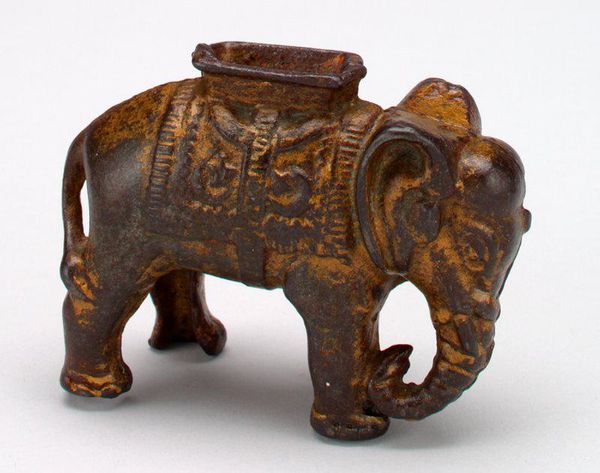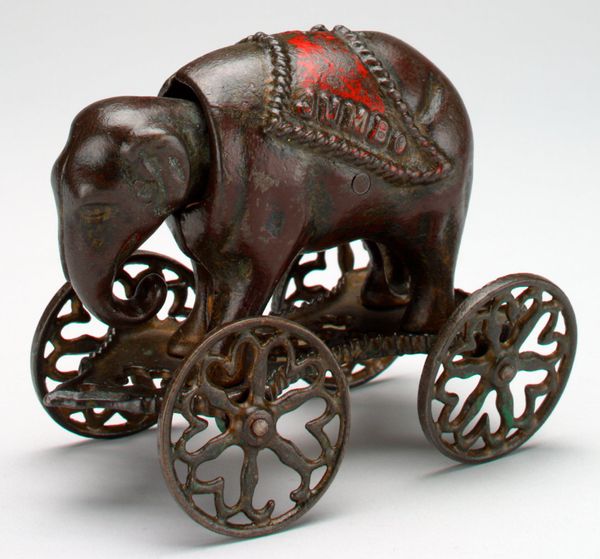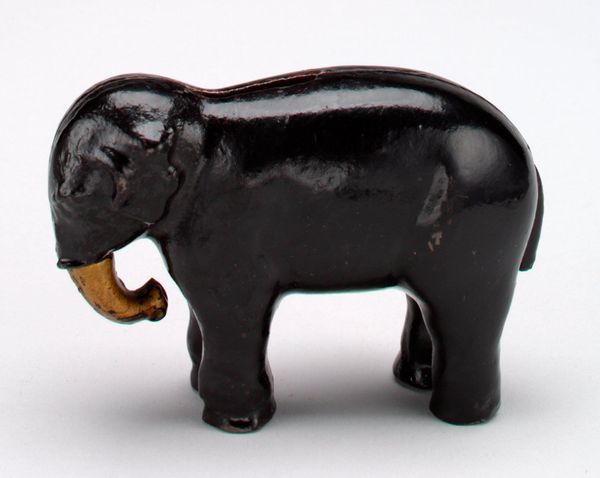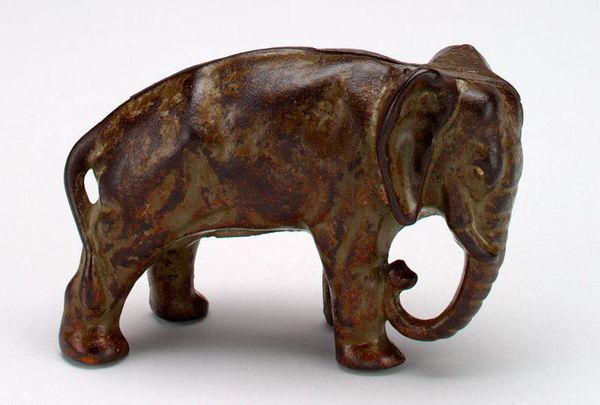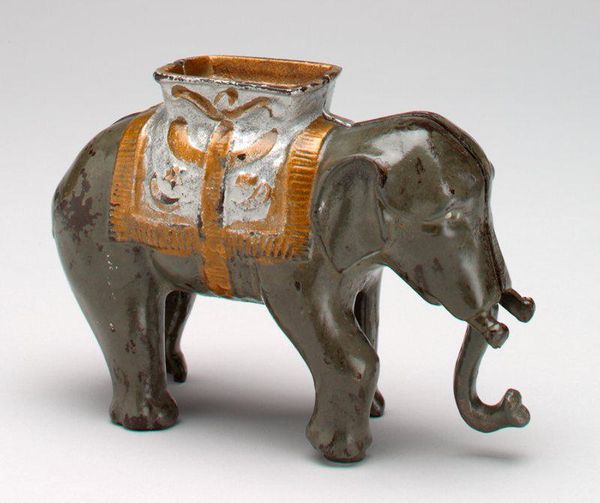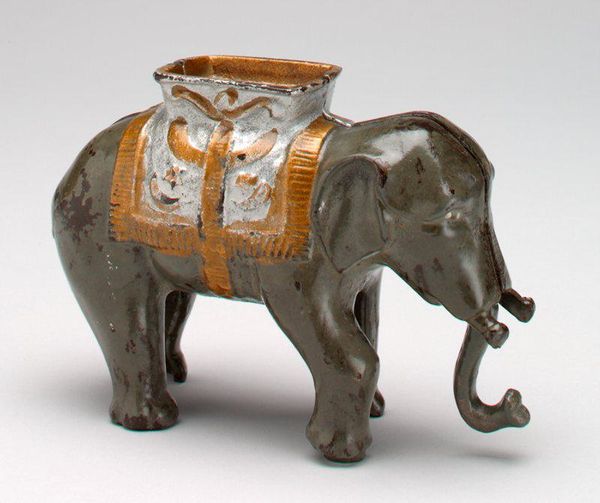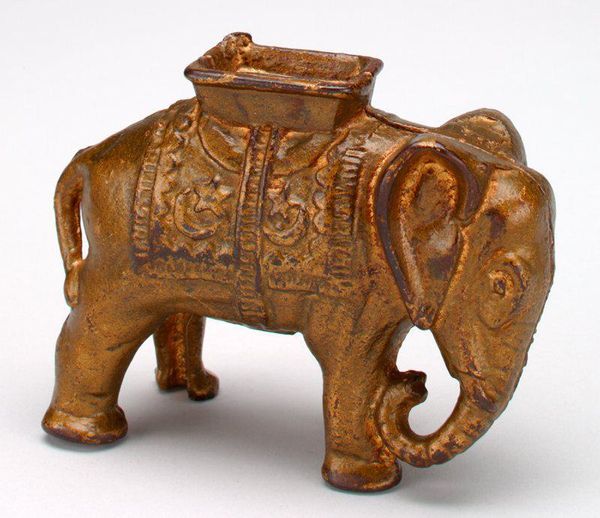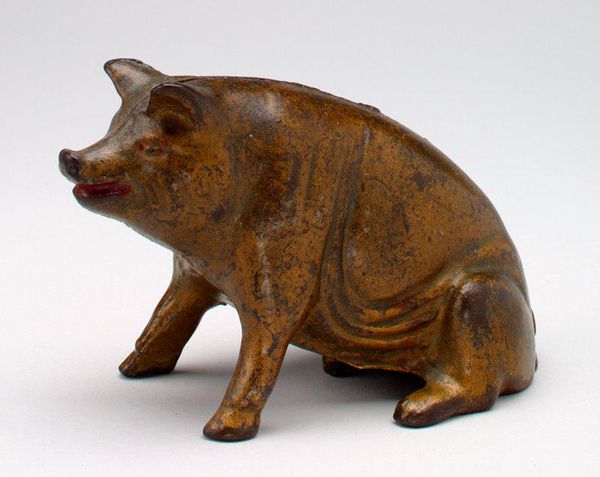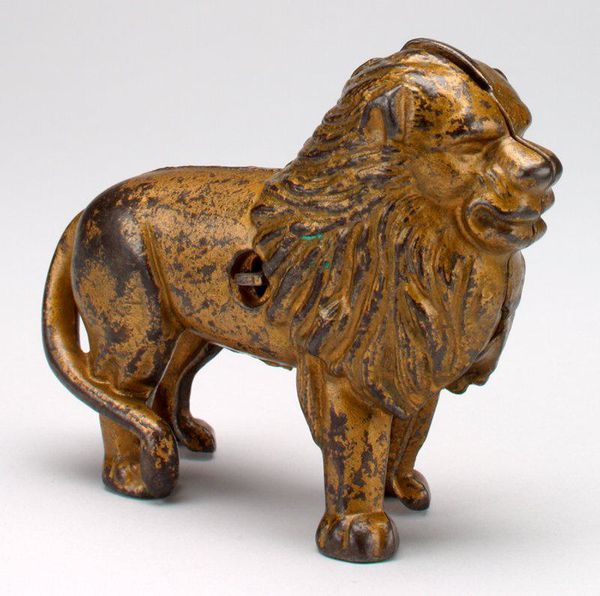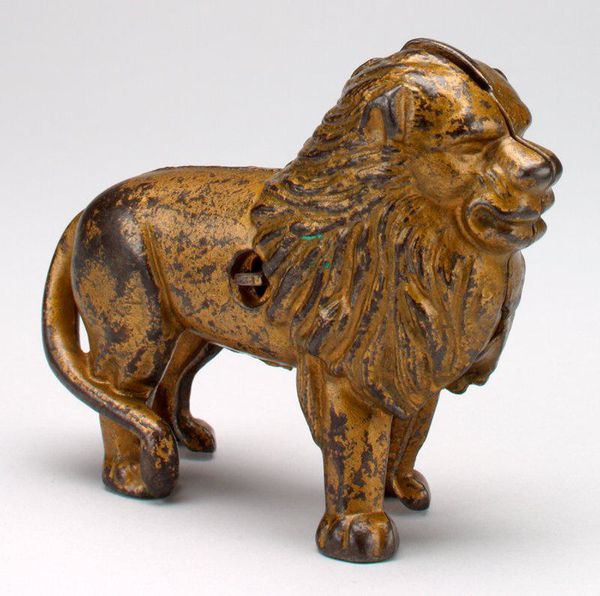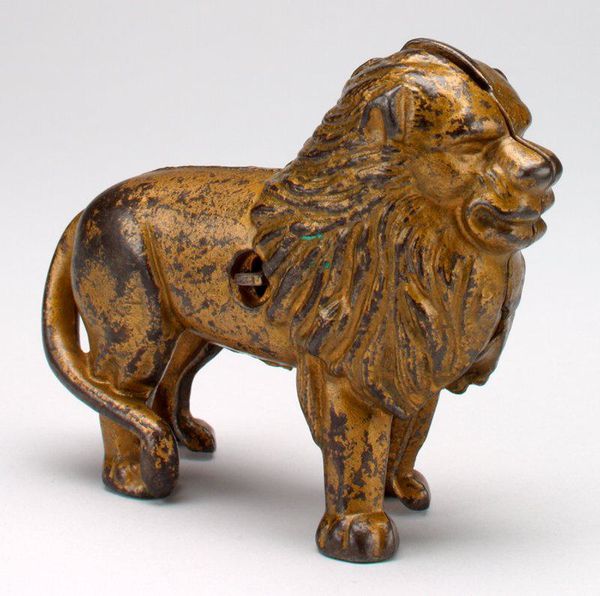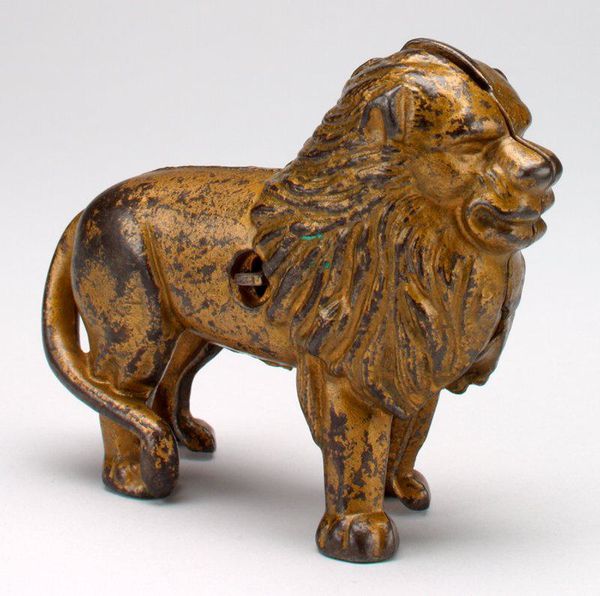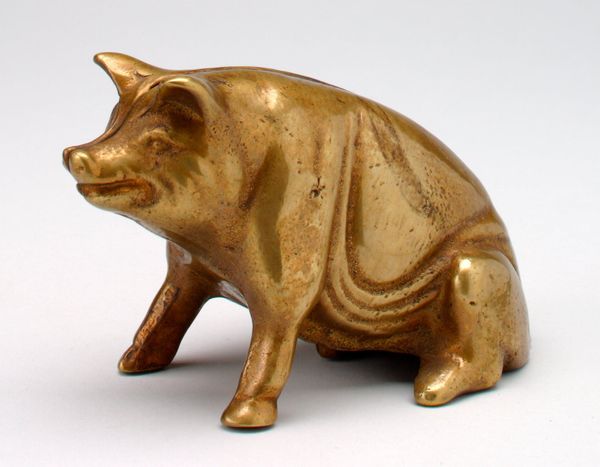
-Jumbo- (base and wheels missing) mechanical bank c. 1883
0:00
0:00
metal, sculpture
#
metal
#
sculpture
#
figuration
#
sculpture
Dimensions: 4 x 2 5/8 x 1 5/8 in. (10.16 x 6.67 x 4.13 cm)
Copyright: Public Domain
Editor: Here we have "Jumbo" mechanical bank from around 1883, attributed to the J. & E. Stevens Company. It's made of metal, and what strikes me is its seemingly docile posture. How do we interpret this depiction, given its context? Curator: It’s critical to recognize the historical context surrounding “Jumbo.” Consider how the name itself alludes to the famous elephant Jumbo, a symbol of exoticism and exploited labor in the late 19th century. Does the object reinforce or critique those power dynamics, particularly the objectification of animals and people of color for entertainment? Editor: That's interesting. I hadn't thought about it in terms of exploitation. The piece, designed as a children's toy, can’t simply be viewed through an innocent lens? Curator: Precisely. Who was this object created for? Who did it exclude? What did it teach children about labor, value, and difference? These are pressing questions when engaging with art like this. It encourages us to link this small bank with larger historical forces. Editor: So it's not just a toy, it's a cultural artifact loaded with potentially problematic ideas about race and labor? Curator: Exactly. Understanding its appeal within the history of exploitation allows us to deconstruct and resist similar narratives present in contemporary society. Editor: I see. It is troubling to think how a seemingly harmless object normalizes problematic power dynamics. I have much to consider, viewing this work from a different, social justice perspective. Curator: Recognizing how art can normalize oppressive structures and dominant ideologies, while at the same time inspiring change, I think is so important.
Comments
No comments
Be the first to comment and join the conversation on the ultimate creative platform.
